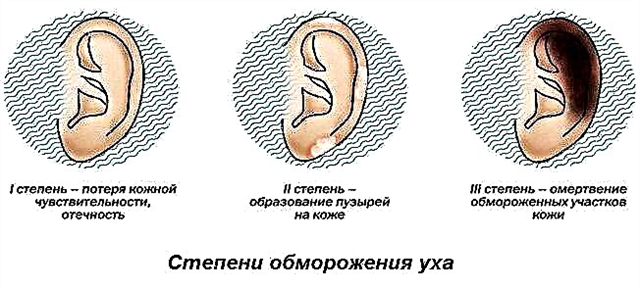Ear plugs consist of sulfur, dead cells of the upper layer of the skin, particles of dust and other dirt, sebum. Most often they are removed by rinsing. Ideally, this procedure is performed by an otolaryngologist after a detailed examination of the patient. The doctor must make sure that the patient does not have: inflammatory processes, violations of the integrity of the eardrum, the presence of diseases such as diabetes mellitus, etc.
If contraindications were found during the initial examination, then washing the ear from the plug at home or in the clinic is strictly prohibited. If everything is in order, then the patient can be helped on the spot or prescribed procedures that he will perform on his own.
How to rinse your ears
 The selection of ear plug removers and the course of treatment depend on many factors, such as the consistency of the sulfur, its depth and color. Consider the most popular solutions and preparations that will help you rinse the ear plug at home.
The selection of ear plug removers and the course of treatment depend on many factors, such as the consistency of the sulfur, its depth and color. Consider the most popular solutions and preparations that will help you rinse the ear plug at home.
- Boiled water. This is the easiest and most painless method to remove plugs. The essence of the procedure is that warm boiled water is drawn into a syringe or a large syringe. A person tilts his head with a stuffed ear up, it is pulled back and up. Fluid is injected along the back of the ear canal gradually so as not to damage the eardrum. After 4-5 washes, the cork should come out together with the water, for this the head is tilted over the basin or other container with the sore ear down. After the procedure, you need to thoroughly dry the ear canal with gauze and close it for 30 minutes with a piece of cotton wool.
Advantages:
- simplicity of the procedure;
- lack of discomfort;
- you do not need to use any pharmacy products.
Disadvantages:
- water does not affect too tight plugs;
- it is rather inconvenient to carry out the procedure on your own without help.
 Hydrogen peroxide. The popular 3% hydrogen peroxide solution can be purchased at any pharmacy. This tool not only dissolves corks, but also disinfects. Before use, it is warmed to body temperature, then slowly injected into the ear canal in the same way as boiled water. After the hissing in the ears stops, you can turn your head with the sore ear down. The cork should come out on its own, in some cases, the procedure is performed for several days in a row.
Hydrogen peroxide. The popular 3% hydrogen peroxide solution can be purchased at any pharmacy. This tool not only dissolves corks, but also disinfects. Before use, it is warmed to body temperature, then slowly injected into the ear canal in the same way as boiled water. After the hissing in the ears stops, you can turn your head with the sore ear down. The cork should come out on its own, in some cases, the procedure is performed for several days in a row.
Advantages:
- effectively dissolves corks;
- does not cause pain;
- the drug is available and inexpensive.
Disadvantages:
- in some cases, the procedure must be carried out over several days;
- sometimes causes a slight burning sensation in the ear;
- not suitable for removing plugs for children, because can burn the thin skin in the ear canal.
 Vegetable oils. This method involves a gradual and gentle washing away of sulfur plugs. Within 3-5 days, 2 times a day, you will need to drip 3-5 drops of vegetable oil into your ear. After that, a cotton swab is placed in the ear so that the liquid does not leak out. The oil softens the sulfur deposits and causes them to independently move towards the auricle. Removing the rest of the cork will be very simple with a piece of sterile bandage.
Vegetable oils. This method involves a gradual and gentle washing away of sulfur plugs. Within 3-5 days, 2 times a day, you will need to drip 3-5 drops of vegetable oil into your ear. After that, a cotton swab is placed in the ear so that the liquid does not leak out. The oil softens the sulfur deposits and causes them to independently move towards the auricle. Removing the rest of the cork will be very simple with a piece of sterile bandage.
Advantages:
- ease of use;
- double action: removes plugs and softens the skin.
Disadvantages:
- does not give the desired effect if the plugs are too tight;
- the procedure must be repeated for several days.
 Pharmacy hygiene products. Scientists have developed hygienic drops specifically for removing ear plugs - cyrumenolytics. They penetrate directly into the cork itself and destroy it from the inside. You need to apply drops 2 times a day for 3 days. Before use, the solution must be warmed up to body temperature; this can be done by holding the bottle in your palms. The patient lies down with the sore ear up, the ear canal is straightened and 1 ml of the drug is injected into it, after that you need to lie down for another 1 minute, and then remove the remaining liquid with a gauze swab.
Pharmacy hygiene products. Scientists have developed hygienic drops specifically for removing ear plugs - cyrumenolytics. They penetrate directly into the cork itself and destroy it from the inside. You need to apply drops 2 times a day for 3 days. Before use, the solution must be warmed up to body temperature; this can be done by holding the bottle in your palms. The patient lies down with the sore ear up, the ear canal is straightened and 1 ml of the drug is injected into it, after that you need to lie down for another 1 minute, and then remove the remaining liquid with a gauze swab.
Advantages:
- act destructively on the cork without increasing its size;
- do not create additional pressure on the eardrum;
- ease of use;
- quickly give a positive effect.
Disadvantages:
- high price;
- the duration of the full course of treatment.
Precautionary measures
Before you rinse the sulfur plug at home, you need to warm the liquid. This is a very important process, since it is in the ear that the vestibular apparatus is located.
 Exposure to a cold drug can cause unpleasant symptoms such as nausea, dizziness, and even vomiting. It is also worth following these simple rules:
Exposure to a cold drug can cause unpleasant symptoms such as nausea, dizziness, and even vomiting. It is also worth following these simple rules:
- the syringe or syringe does not need to be inserted into the hearing aid itself; it is enough to bring the instrument close to it;
- a stream of rinsing agent is introduced gently, gradually increasing the pressure, along the upper wall of the ear canal;
- after washing, the ear is thoroughly dried and covered with a cotton swab;
- you cannot go outside after washing for 30 minutes;
- if you experience the slightest pain or other side effects, the flushing should be stopped and a doctor should be consulted.
Conclusions
It is quite possible to remove the sulfur plug from the ears at home, but this should be done only with the permission of the doctor. It is necessary to follow all the doctor's recommendations so that the sulfur accumulations come out painlessly. Take care of the hygiene of your ears, take care of your health, and you will always have a sharp hearing!

 Hydrogen peroxide. The popular 3% hydrogen peroxide solution can be purchased at any pharmacy. This tool not only dissolves corks, but also disinfects. Before use, it is warmed to body temperature, then slowly injected into the ear canal in the same way as boiled water. After the hissing in the ears stops, you can turn your head with the sore ear down. The cork should come out on its own, in some cases, the procedure is performed for several days in a row.
Hydrogen peroxide. The popular 3% hydrogen peroxide solution can be purchased at any pharmacy. This tool not only dissolves corks, but also disinfects. Before use, it is warmed to body temperature, then slowly injected into the ear canal in the same way as boiled water. After the hissing in the ears stops, you can turn your head with the sore ear down. The cork should come out on its own, in some cases, the procedure is performed for several days in a row. Vegetable oils. This method involves a gradual and gentle washing away of sulfur plugs. Within 3-5 days, 2 times a day, you will need to drip 3-5 drops of vegetable oil into your ear. After that, a cotton swab is placed in the ear so that the liquid does not leak out. The oil softens the sulfur deposits and causes them to independently move towards the auricle. Removing the rest of the cork will be very simple with a piece of sterile bandage.
Vegetable oils. This method involves a gradual and gentle washing away of sulfur plugs. Within 3-5 days, 2 times a day, you will need to drip 3-5 drops of vegetable oil into your ear. After that, a cotton swab is placed in the ear so that the liquid does not leak out. The oil softens the sulfur deposits and causes them to independently move towards the auricle. Removing the rest of the cork will be very simple with a piece of sterile bandage. Pharmacy hygiene products. Scientists have developed hygienic drops specifically for removing ear plugs - cyrumenolytics. They penetrate directly into the cork itself and destroy it from the inside. You need to apply drops 2 times a day for 3 days. Before use, the solution must be warmed up to body temperature; this can be done by holding the bottle in your palms. The patient lies down with the sore ear up, the ear canal is straightened and 1 ml of the drug is injected into it, after that you need to lie down for another 1 minute, and then remove the remaining liquid with a gauze swab.
Pharmacy hygiene products. Scientists have developed hygienic drops specifically for removing ear plugs - cyrumenolytics. They penetrate directly into the cork itself and destroy it from the inside. You need to apply drops 2 times a day for 3 days. Before use, the solution must be warmed up to body temperature; this can be done by holding the bottle in your palms. The patient lies down with the sore ear up, the ear canal is straightened and 1 ml of the drug is injected into it, after that you need to lie down for another 1 minute, and then remove the remaining liquid with a gauze swab.

